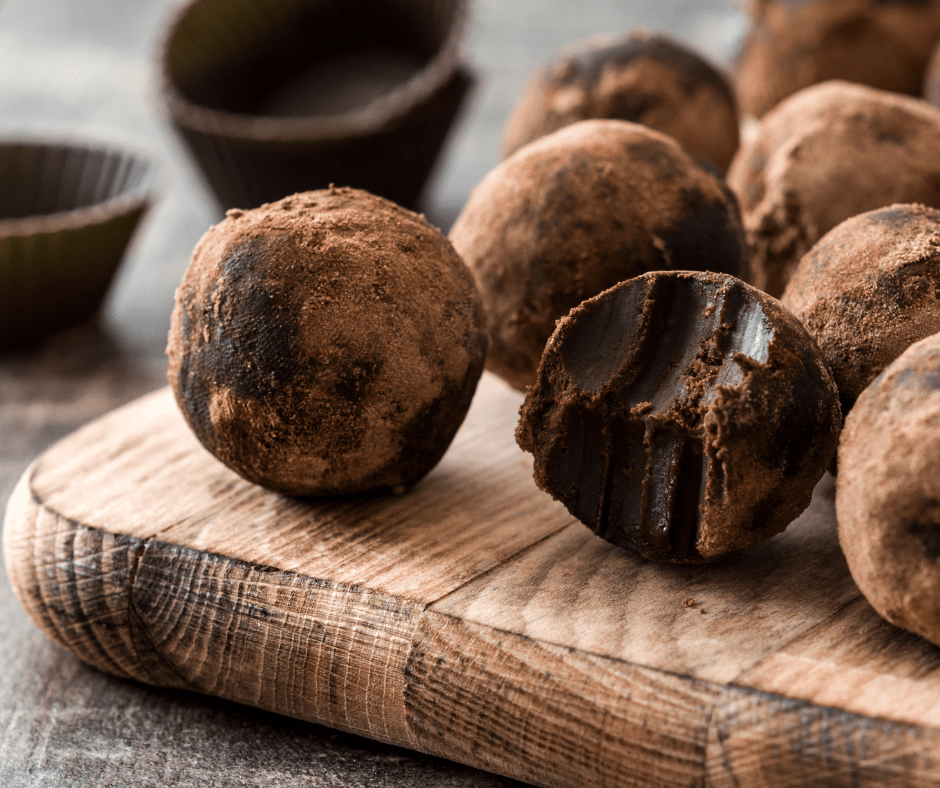Food of the Month – Chocolate

Chocolate begins as a collection of seeds in a fruit pod. Separated from their pith, the seeds are fermented in piles for a week, then dried, before being roasted for market. Chocolate is native to Central and South America, but now can be found all along the equator in Africa and SE Asia.
Nutrition: Chocolate (70% or greater cacao content) is rich in the minerals iron and magnesium as well as heart healthy flavanols. Flavanols have been shown to support the production of nitric oxide, supporting cardiovascular health. Quality milk chocolate contains cocoa powder, cocoa butter, sugar, and powdered milk. Many national brands substitute these ingredients with a variety of preservatives, colorings and fats to reduce production costs. White chocolate contains no cocoa powder but is rich in cocoa butter which gives it its signature color. Milk and sugar are added resulting in a product that is high in sugar, fat, and calories.
Fun Facts: Because of their small size, only one in 500 flowers are pollinated to make a cocoa pod. This means a single tree only produces 10-20 standard chocolate bars annually! Modern chocolate was invented in the 1820s when a Dutch chocolate baker separated the nib from the bean. The nib is rich in cocoa butter and the bean is crushed, mixed with alkaline salts and is renamed cocoa powder. This process makes the chocolate powder mix more easily with water.
FYI: 70% of the world’s chocolate comes from impoverished West Africa where unregulated child labor has become a concern. This practice is far less common in Latin America; to further reduce the likelihood that your chocolate was harvested by youth, purchase Fair Trade or Rainforest Certified. These non-profits aim to support marginalized producers and workers in developing countries as well as supporting ecological responsibility.
Chocolate (Theobroma cacao) is an ancient food originating in Olmec culture of Mesoamerica as a bitter drink of cacao beans, water, vanilla, and chili. Spaniards, in the 17th century, replaced the chilies with sugar which quickly spread through noble circles. Soon the French, English, and Dutch started cultivating cacao in their Caribbean colonies using slave labor.
Click here for an easy and delicious recipe for dark chocolate truffles!
